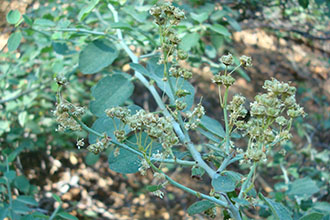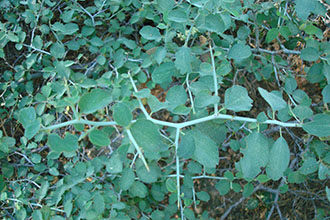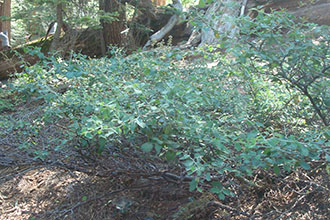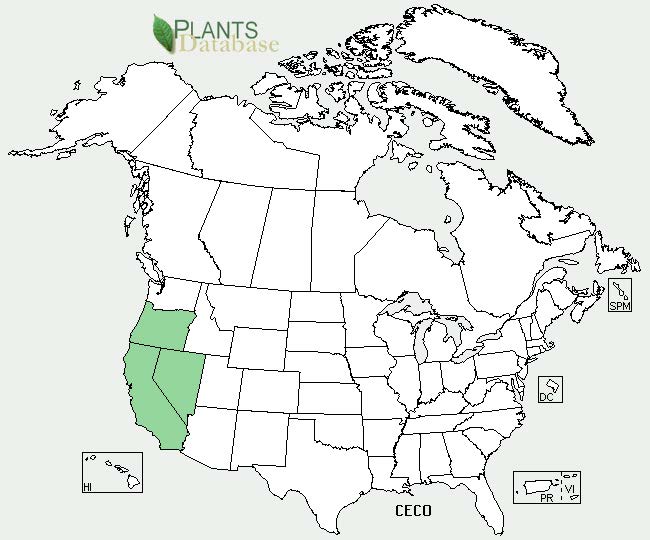Taxonomy: Kingdom - Plantae (plants). Subkingdom - Tracheobionta (vascular plants). Superdivision - Spermatophyta (seed plants). Division - Magnoliophyta (flowering plants). Class - Magnoliopsida. Subclass - Rosidae. Order - Rhamnales. Family - Rhamnaceae (buckthorn). Genus - Ceanothus L. Species - Ceanothus cordulatus Kellogg
Ecology: Whitethorn ceanothus is a nitrogen-fixing shrub that grows best in open situations. Dry, open flats, pine forests, rocky ridges, and washes that have well-drained soils are common sites where whitethorn ceanothus is found. Areas that have been burned or logged are very favorable for populations of whitethorn ceanothus. It can also survive and thrives in the shade of coniferous timber. Whitethorn ceanothus has a narrow range of environments in which it thrives. It is most commonly found within sclerophyllous shrub communities in both conifer and hardwood forests of the coast and interior ranges of the Sierra Nevada. In addition to the previously listed habitats, whitethorn ceanothus also occurs in the understory of giant sequoia (Sequoiadendron giganteum) communities/groves because of its ability to tolerate low light levels.



